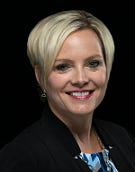Exclusive: CenturyLink Makes Decision on Channel ChiefExclusive: CenturyLink Makes Decision on Channel Chief
Last month, John DeLozier left his position at CenturyLink and began serving as 8×8‘s new global channel chief.

**Editor’s Note: Click here to see which channel people were on the move in July.**
CenturyLink has chosen not to hire a new channel chief to replace John DeLozier, but instead has promoted vice president of indirect sales Garrett Gee to lead the company’s channel partner program.

CenturyLink’s Garrett Gee
Early last month, DeLozier vacated his position at CenturyLink and began serving as 8×8‘s new global channel chief. Those who were reporting to DeLozier have been reporting to Lisa Miller, CenturyLink’s president of wholesale, indirect channels and alliances, pending a decision on a new channel leader.
In a Channel Partners exclusive, Miller tells us Gee now will be the leader of CenturyLink’s partner program, responsible for both indirect and strategic partners. Before CenturyLink completed its $34 billion acquisition of Level 3 last November, Gee was that company’s channel chief.
“He has extensive knowledge of the channel and the right experience to really ensure that our program remains one of the top programs in the industry,” Miller said.
In a Q&A with Channel Partners, Miller and Gee give an update on CenturyLink’s partner program and channel-management structure.
Channel Partners: Garrett, how is this expanded role different from what you’ve been doing?
Garrett Gee: Certainly I’m humbled and excited to take on this additional responsibility. Certainly I was in the same capacity at the former Level 3, but the new combined company is a much larger scale and it brings the ability for us to do some things that I wasn’t able to do previously. One of the examples would be really our strategy around having tactical teams and strategic teams so we can have the strategy teams really lay down the groundwork for our tactical teams to focus on. And that’s just one example of some of the things that we’ll be focusing on for the remainder of the year.

CenturyLink’s Lisa Miller
CP: Why was the decision made to expand Gee’s role as opposed to hiring a replacement for John DeLozier?
Lisa Miller: As you look at the industry, there [are] always some tweaks and changes, but we feel very confident with Garrett in the leadership role to be the single channel chief leading our program. And we have four very capable vice presidents that report in to Garrett, so we feel that our bench is very strong as well, so that’s super exciting. We feel very confident to have one leader leading the program for indirect and strategic partners. And that’s an important alignment in the team.
GG: At that next leadership level, we have a really strong balance of former CenturyLink and Level 3 leaders. We have 13 sales directors in the field and then that is replicated when you look at our engineering and our support organizations as well. We’re feeling really good about where our leadership team stands at this point.
CP: What sort of partner feedback have you been receiving and has that played a role in decisions regarding channel-management structure?
LM: Our partner community has a big influence on our program, and I personally talked to a good selection of our top partners as I was going through this process, as well as having discussions with all of our team leaders within the organization to take their feedback as well because we want to build the strongest program we can, and it’s important to make certain we’re listening to all of our partners as well as all of our internal stakeholders.
CP: Garrett, what’s on your to-do list to tackle first?
GG: We spent about a year in integration and it’s been about three quarters almost since close (of the Level 3 acquisition) and that allowed us to …
… really complete an extensive analysis of both programs to really position us for growth, and so I would say we got a little bit of a jump-start on some of the changes that partners will see throughout the course of the year.
We just touched on the national partner program having that strategic focus with our national channel managers, but we also invested in areas like our sales engineers to handle the growth that we’re expecting in non-channel, integrated accounts. But other things that we did, like post-sales support, we have a true partner-advocacy team where we have basically a one-to-one ratio between our partner support managers and our field channel managers, and they’re really that support line for our channel community. That along with many other things are already in the works, and so we’re feeling good about the headway that we’ve already made.
CP: Can you give an update on partner opportunities created by the Level 3 acquisition?
GG: We have a new dedicated renewal team. That was a practice that we had on the former CenturyLink side but not on the Level 3 side … so now we have a dedicated team that focuses on renewing the customer base along with our channel partners. That has really helped us with retaining customers and keeping our churn rates down. Another example would be our inside sales support team. So one of the things that we continue to ask our channel managers to do is get out in the field, and spend time with your channel partners and customers, but if you do that, then all the partners aren’t getting the support that they need from a quoting perspective, so we have a very robust inside sales team that supports our channel managers when they’re in the field.
LM: The beauty that we had with integration for us prior to close was a solid year, so we were able to look at the CenturyLink program, the Level 3 program and just say, how do we position a program for growth, and if resources were not an issue, how many would we have facing our partners, how would we support a program that was in high-growth mode. And so that gave us really something of a luxury. You usually don’t get to take almost a year to say, “If I [were] going to take a clean sheet of paper and design a program to be the best in the industry, what would I do?” And … all of these things that Garrett just talked about, that came out of that solid year of looking at it. So when you look and say, “Hey what are we going to change?” we don’t really need to change anything because we were trying to look at this program and design it as the best in the industry, the best in class, and what would you have to do to support that, what would you have to do to create that? There will always be little nuances around the edge that we’ll try to tweak, but we have very regular partner calls with our top 25 partners … and so we try to keep them apprised of things that we’re doing, but we also take feedback from them.
CP: Is the current partner-program structure able to accommodate new and changing partner types?
LM: I have responsibility for wholesale, indirect and alliances, and the reason I have that combination is because the lines are blurring in this space, and so we do have some customers that play in the wholesale realm as well as the partner realm, and so as these lines blur, we have to be able to …
… adapt quickly and be able to take advantage of that, be nimble, be agile and be able to work within the constraints. We want to grow our business regardless of if it’s wholesale, indirect or alliances, and we have to be able to move as the industry moves and shifts.
GG: We’re certainly seeing continued consolidation, mergers between partners, but there are new entrants into the marketplace, so whether it’s VARs or MSSPs, we’re starting to see alliances as well between these new partner types and our traditional wireline-focused partners, so I think that trend will continue. But to Lisa’s point, I think the key to CenturyLink is to continue to remain flexible and nimble, whether we sign people directly or we use our master-agent strategy to support those partner types, that’s certainly an area of focus for us. So we believe that CenturyLink has been the preferred partner program for a long time; we’ve had a continuous history in the indirect channel – 20 years and counting – and a record of stability, so we feel strongly that partners can trust their business and their customers with us because we’re going to remain focused in this area and we’re going to continue to invest here.
LM: With this complexity blurring of lines, our global value proposition is even more important. So what we’re trying to create is a comprehensive product portfolio that is very flexible, that allows a partner, a carrier, a wholesale – however they want to buy from us – we want to make certain that we are easy to do business and we continue to have a premier partner program.
Read more about:
AgentsAbout the Author
You May Also Like


